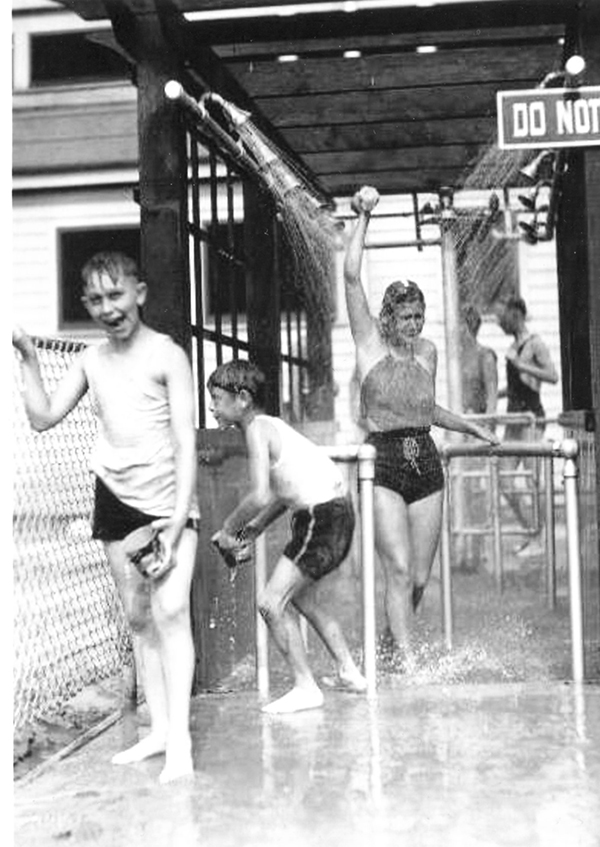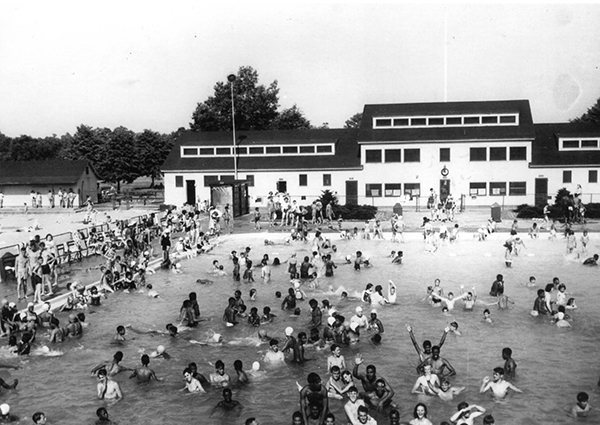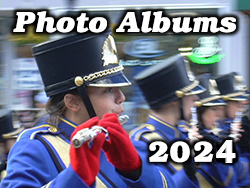Submitted by Al Shipley, City Historian and Rahway Library Research Consultant
Growing up in the 1950s and 1960s, summertime meant Little League baseball games, activities at the city playgrounds, lazy afternoons playing board games on front porches, and of course, swimming at the Rahway Park pool. At a time when backyard pools were still a rarity, Rahway Pool was the oasis where young swimmers and their friends would go to cool off on hot, humid summer days.
We all called the park “Rahway Park” and to us the pool was “Rahway Pool” and we never thought of either as facilities operated and maintained by the county. It was our park, although we certainly were unaware of its history.
The initial proposal to create a park along the Rahway River basin goes back to 1919. It was just after World War I and community planners were advocating the need for open parklands, especially in urban areas. They contended that parks would afford the citizens living in congested cities both an open area for recreation and a place where one could go to get closer to nature. The Rahway River which runs through the central part of Union County cutting through seven municipalities, afforded an excellent opportunity to develop a magnificent park system.
With a goal now set in mind, a Union County Park Commission was established in 1921. Within a year, on January 18, 1922, Arthur R. Wendell, President of the Wheatena Company and one of the five original commissioners, donated four acres opposite his plant between Elizabeth Avenue and the river to establish the first piece of the Rahway River Parkway. Over the next three years, 170 more acres were donated county-wide for the extended parkway. (Today, the parkway covers over 500 acres.). In Rahway, the city purchased and donated 63 acres of private property and transferred the deed of 40 plus acres of the former Poor Farm tract to the county to make up most of what is today the 129 acre Rahway River Park.
By the mid-1920s, plans were underway that would transform overgrown fields into a park. The Park Commission hired the Olmsted Bothers, the celebrated landscape architects who laid-out New York City’s Central Park, to do the design work. Their blueprints called for a man-made lake to replace a low-lying, swampy, garbage dump, fields for baseball, football, and softball, a regulation running track, and hard surface tennis courts. A children’s playground was constructed at the western portion of the park. There were tree-lined areas that were perfect for picnics and plenty of open space. But the main attraction would come four years later when the first public swimming pool in Union County was added to the complex.
Rahway Pool opened on Saturday, August 17, 1929, with over 1,000 residents from all over the county pushing through the turnstile for a chance to be part of opening day. The large 150 foot by 75 foot pool was six inches deep at the shallow end and gradually increased to a depth of 10 ½ feet at the deep end where diving boards and a diving tower beckoned the more talented and more daring swimmers. Sun bathers could lie out and relax on a sand beach (230 feet by 80 feet) which was adjacent to the pool. It was reported that the 100 tons of washed seashore sand used to fill the beach was “finer than any sand on any beach at the Jersey Shore.” A refreshment stand was located in the beach area. The bath house, built in the classic 1930s style, contained changing rooms, lockers, showers, and bathrooms. Before exiting the bath house, a bather had to step into a foot trough to help prevent the possible spread of infection. All bathers had to also go through a shower stall before entering the pool or beach as a second sanitary safeguard.
The pool was open from 10:00 AM to 10:00 PM (floodlights allowed for night-time swimming) and cost 15 cents for children and 25 cents for adults, Monday to Friday. Children were charged a quarter and adults 50 cents on Saturdays and Sundays. On Monday, Wednesday, and Friday mornings, 10:00-noon, children could swim for free.
Not much changed at the pool over the next two or three decades, so by the 50s and 60s, the experiences one had were similar to the ones on opening day and the memories are probably likewise similar. The heavy turnstile was still in place and although prices went up a small amount, youngsters could still swim for free if they got there before noon. Bathers still put their street clothes in wire baskets that would be handed to attendants who put them on long, numbered shelves. In return, one was given a large pin with a number corresponding to the basket so at the end of the day, one could retrieve the right basket of clothes. Before leaving the bath house everyone still had to step into the foot trough that was filled with a murky, blueish-white colored, chlorinated liquid. It became sort of a rite of passage to be able to get across the trough without getting one’s feet wet. The shower stall, with its water jets shooting at all angles and hand rails constructed in zig-zag fashion, was also still in place and was an obstacle most tried to get through as quickly as they could. But in the end it was all worth it. Whether one stepped cautiously into the shallow end and slowly walked to deeper water, or jumped in from the side at the four foot mark, or dove off the high dive, it was always a great day to be at Rahway Pool.

(above) Before entering the pool area, bathers had to pass through a shower stall. It was a challenge to go through as quickly as one could.

(above) Swimmers enjoy a day at Rahway Pool. Note the sand beach at left of photo and the large changing house behind the pool.





